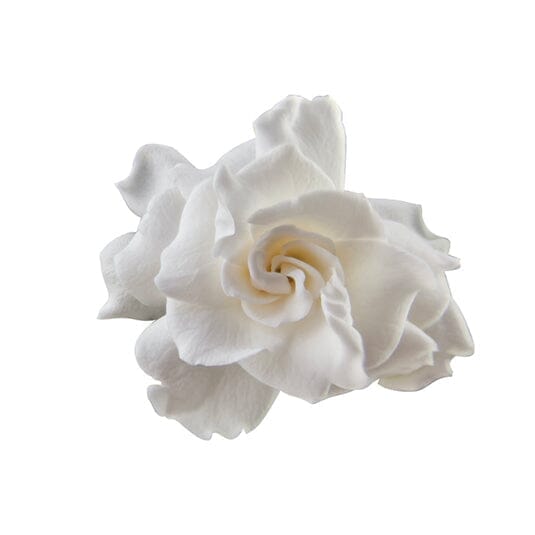What does the word galbanum mean?
The name "galbanum" originates from ancient Greek, where the term "khalban" was used to refer to an aromatic resin. This word was later adopted by Latin as "galbanum." The etymology of this term reveals its close connection with the plant itself. Indeed, the word "galbanum" refers to the plant Ferula gummosa, a wild plant species whose resin is used to extract galbanum in perfumery.
The etymology of the word thus reveals the connection between the name of the ingredient and its plant source, testifying to the deep relationship between nature and the art of perfumery.
In the beginning…
The history of galbanum dates back to ancient times, when this plant resin was already revered for its aromatic and medicinal properties. Used by the Egyptians, Greeks, and Romans, galbanum was considered a precious treasure. The ancient Egyptians valued it for its healing properties and used it in ointments and balms. It was also used in religious rituals for its sacred fragrance. The Greeks and Romans, for their part, used it in their perfumes and cosmetics, considering galbanum a luxurious ingredient. In the Middle Ages, it was used in medicinal remedies for its anti-inflammatory and healing properties. The popularity of galbanum has persisted over the centuries, and it is still widely used in perfumery today for its invigorating personality and distinctive scent. The long and rich history of galbanum is a testament to its timeless value and status as a precious ingredient in the world of perfumes.
The origins of galbanum in the art of perfumery have a long history. The ancient Egyptians used it to embalm their dead, while the Greeks and Romans used it to perfume their homes and bodies. In the Middle Ages, galbanum was used as a remedy against the plague. Over the centuries, galbanum became a favorite ingredient for perfumers, adding a fresh, green touch to fragrance compositions. Today, galbanum is still used in many high-quality perfumes due to its unique olfactory properties.
Galbanum cultivation
Galbanum is primarily obtained from the Ferula gummosa (gum fern) plant, which grows wild in specific regions, including Iran and Afghanistan. This hardy plant requires specific environmental conditions to fully develop. It thrives in arid, mountainous climates, where it is exposed to long periods of sunlight and extreme temperatures. Growing galbanum is a demanding process that requires patience and skill. The plant's seeds are sown in well-drained soil, and then the young plants are carefully tended and protected from pests. After several years of growth, the mature stems of the plant are cut open to allow the resin to flow out. This is when the precious galbanum resin is harvested by hand.
The cultivation of galbanum therefore remains an artisanal process, thus preserving the quality and authenticity of this unique ingredient in perfumery.
Planting galbanum, also known as Ferula gummosa, is a delicate process that requires careful attention. The plant's seeds are usually sown in spring in well-drained, sunny soil . Before planting, it is important to prepare the soil by weeding it and loosening it sufficiently to allow good root growth. The seeds are then scattered at an appropriate depth and lightly covered with soil. Germination can take several weeks, and regular watering is crucial to ensure the healthy development of the young plants. Once the seedlings have reached a sufficient size, they are usually transplanted to their permanent locations, providing adequate space for their growth. Planting galbanum, therefore, requires patience and expertise to ensure successful cultivation and a bountiful harvest of this aromatic plant's precious resin.
After the seeds germinate, young shoots emerge from the soil, bearing delicate green leaves. Over time, the plant develops into a robust structure, reaching a height of up to two meters. Its stems are characterized by their spines, while the leaves unfurl into an elegant, cut shape. As the plant matures, it begins to produce an aromatic resin through small cracks in its stems. This resin, galbanum, is meticulously collected by hand. The development of the galbanum plant requires specific environmental conditions, including well-drained soil, adequate sun exposure, and arid climates. It is through this development process that the galbanum plant offers its precious resin, capturing its unique essence and making an invaluable contribution to the perfume industry.
When the galbanum plant reaches maturity, precise incisions are made on the stems, allowing the resin to flow out. These incisions are made carefully to avoid damaging the plant itself. Upon contact with air, the resin begins to oxidize and solidify, forming small drops or solid lumps. These drops or lumps of resin are meticulously harvested , then sorted, cleaned, and refined to achieve the highest possible quality. This harvesting process is often done by hand to preserve the purity and authenticity of the ingredient.
What did you know about galbanum?
Galbanum is a plant resin used in perfumery for its green, slightly resinous note, so the plant is used as a raw material. The treatment and processing of this plant are essential to obtaining a quality essential oil. After harvesting, the leaves and stems are distilled in a still to extract the galbanum essential oil. This oil is then refined to remove impurities and distillation residue. The end result is a pure essential oil, ready for use in perfumery. Galbanum producers often adopt responsible practices to minimize the environmental and social impact of their business.
These are distilled in a still to extract the galbanum essential oil. The oil is then refined to remove impurities and distillation residue. The end result is a pure essential oil, ready for use in perfumery.
Galbanum is a plant essence used in perfumery for its green note. Its olfactory profile is unique and recognizable, with fresh notes of mint leaves and cut grass—one might say it smells like peas and paint. This olfactory composition makes it a popular ingredient in both men's and women's fragrances, adding a touch of freshness and vitality to compositions.
Galbanum is a highly valued ingredient in perfumery for its green freshness and ability to add dimension to fragrances. Galbanum is used in many perfumes, particularly those in the chypre family. It adds a touch of greenery and resin.
Galbanum is generally considered a top note in the olfactory pyramid of perfumes. With its freshness and liveliness, it is often used to create an initial impact and grab attention from the very first notes of the perfume. As a top note, it can bring an initial freshness and liveliness to the fragrance!
Galbanum, with its green, herbaceous, and fresh touch, is a valuable ingredient in the creation of complex olfactory accords in perfumery. It blends harmoniously with a variety of other ingredients, offering a new and captivating dimension to fragrance compositions. Galbanum is often used in chypre accords, where it blends with notes of oakmoss, patchouli, and bergamot to create sophisticated and elegant fragrances. It can also be combined with floral notes such as jasmine, lily of the valley, or rose, bringing a green freshness that delicately complements the sweetness of the flowers. Accords with galbanum can also include citrus notes, such as lemon or grapefruit, for a lively and sparkling sensation. It thus offers remarkable versatility in perfumery, allowing the creation of a wide range of olfactory accords, from freshness to deeper, more sophisticated nuances.
Good to know!
In traditional medicine, it is recognized for its anti-inflammatory, antiseptic, and healing properties. It can be used to relieve skin irritations, minor burns, and cuts. Galbanum is also valued for its stimulating and refreshing scent, which can help calm the mind and promote relaxation. In aromatherapy, it is considered a respiratory stimulant, useful for clearing the airways in cases of congestion or coughs. Additionally, in perfumery, galbanum brings a distinctive green and herbaceous touch, which adds freshness and vitality to olfactory compositions. While these benefits and virtues are often associated with galbanum, it is always recommended to consult a healthcare professional before using any galbanum-based product for therapeutic purposes.
Famous perfumes with galbanum
Among the most famous perfumes that contain galbanum, here are four emblematic examples:
• Chanel No. 19 : Launched in 1970, this iconic fragrance from the house of Chanel is famous for its green and sophisticated composition. Galbanum plays a key role by providing a herbaceous and invigorating note that blends harmoniously with floral and woody accords.
• Vent Vert by Balmain : This classic fragrance from the house of Balmain, launched in 1947, is renowned for its bold use of galbanum. It has a fresh and vibrant character, with a combination of green, floral, and woody notes that gives it a timeless elegance.
These perfumes are widely recognized for their creative and judicious use of galbanum.










